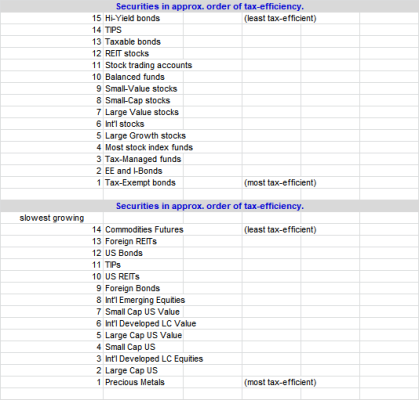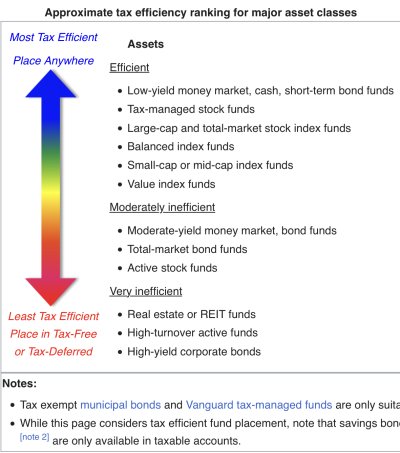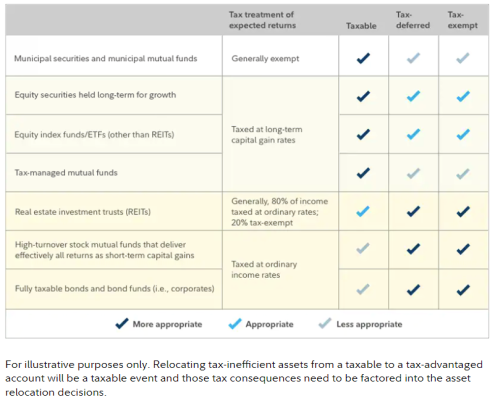I remember reading about “tax efficient” fund placement, reallocating my portfolio accordingly, bragging to my wife about how much money we were going to make and sharing here how great it was. Then a wiser poster told me that I had really just made an asset allocation shift. I disagreed at the time, but now realize that poster had a point.
The analysis is complex and most models don’t allow the “tax efficient” fund placement, so it’s hard to get your hands around it. Both Pralana Gold and the Bogleheads Retiree Portfolio Model have the feature. Pralana Gold also has the ability to do historical backtests and Monte Carlo analysis, so I used it to dig in.
Using methods where I set a constant return each year, the "tax efficient" method did lead to a greater level of wealth. That makes sense as it reduced tax drag in taxable and the government stakes a claim to a portion of the tax deferred account, so holding lots of bonds there means forcing the government to grab a larger share of bonds rather than stocks. But turning that around means that leaves me more stock heavy than I had actually intended.
So there must exist a higher stock allocation, held equally in all accounts, that could have achieved that same extra wealth as the "tax efficient" method. I played around until I found what that equivalent allocation was. Turns out, the required allocation change was quite large. My 80/20 “tax efficient” allocation gave the same result as an 87/13 equal allocation portfolio (the difference would vary depending on the relative and absolute size of your accounts, your tax bracket, etc.)
Now if an 80/20 “tax efficient” portfolio behaves like an 80/20 “equal allocation” portfolio in a bear market and an 87/13 in an average market, that would be a free lunch! But if it behaves like 87/13 in bull and bear markets, then “tax efficient” fund placement would really just be a riskier portfolio.
I looked at Monte Carlo results and those looked super close between 87/13 equal allocation and 80/20 tax efficient. Then I backtested a few historical bull and bear markets and found the same. The biggest factor in whatever differences arose seemed to be timing of when bull or bear markets happened, because the "tax efficient" portfolio skews the asset allocation differently at different times - bonds build up in tax deferred prior to retirement and eventually get sold and/or moved to other accounts, as Roth Conversions and especially as RMDs occur and the portfolio is rebalanced.
So for me, it looks like “tax efficient” is just a much riskier portfolio, not a free lunch. It also means I never really know my exact equivalent asset allocation, nor control my risk, but both would always be higher than I thought.
Note that individual situations vary so much and the tax code is so complex that maybe it gives benefits over and above the risk increase for others, but I believe there is a real risk increase, so I would be cautious.




